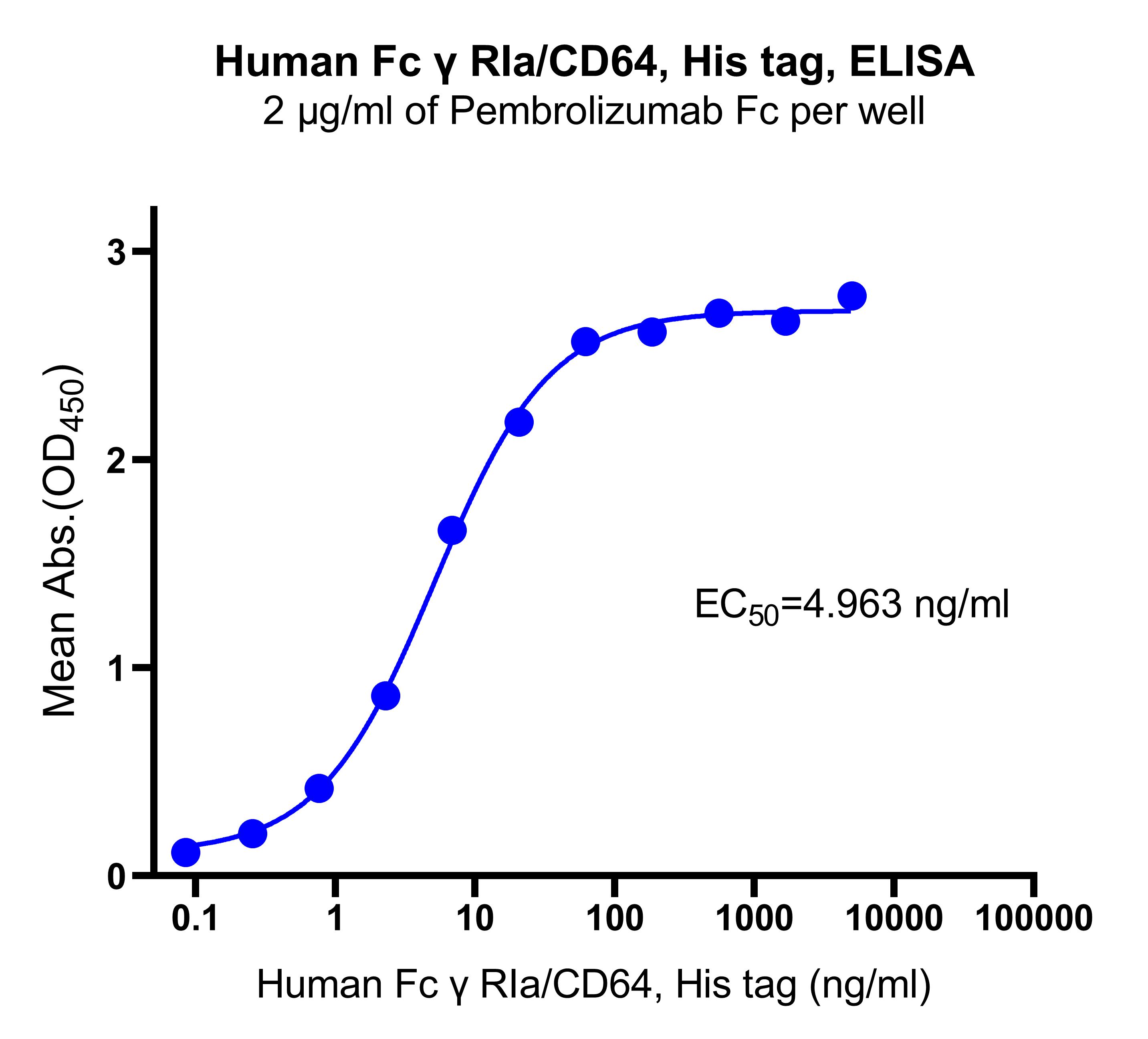Protein sequence (P12314, Gln16-His292, with C-10*His) QVDTTKAVITLQPPWVSVFQEETVTLHCEVLHLPGSSSTQWFLNGTATQTSTPSYRITSASVNDSGEYRCQRGLSGRSDPIQLEIHRGWLLLQVSSRVFTEGEPLALRCHAWKDKLVYNVLYYRNGKAFKFFHWNSNLTILKTNISHNGTYHCSGMGKHRYTSAGISVTVKELFPAPVLNASVTSPLLEGNLVTLSCETKLLLQRPGLQLYFSFYMGSKTLRGRNTSSEYQILTARREDSGLYWCEAATEDGNVLKRSPELELQVLGLQLPTPVWFHGGGGSHHHHHHHHHH
12 months from date of receipt, -20 to -70 °C as supplied. 6 months, -20 to -70 °C under sterile conditions after reconstitution. 1 week, 2 to 8 °C under sterile conditions after reconstitution. Please avoid repeated freeze-thaw cycles.
CD64 (Cluster of Differentiation 64) is a type of integral membrane glycoprotein known as an Fc receptor that binds monomeric IgG-type antibodies with high affinity. It is more commonly known as Fc-gamma receptor 1 (FcγRI). After binding IgG, CD64 interacts with an accessory chain known as the common γ chain (γ chain), which possesses an ITAM motif that is necessary for triggering cellular activation. Structurally CD64 is composed of a signal peptide that allows its transport to the surface of a cell, three extracellular immunoglobulin domains of the C2-type that it uses to bind antibody, a hydrophobic transmembrane domain, and a short cytoplasmic tail. CD64 is constitutively found on only macrophages and monocytes, but treatment of polymorphonuclear leukocytes with cytokines like IFNγ and G-CSF can induce CD64 expression on these cells.

Immobilized Human IgG1 Fc (S0A0052) at 4 μg/mL (50 μL/well) can bind Human Fc γ RIa/CD64, His tag with EC50 of 11.39-14.62 ng/ml.

Immobilized Pembrolizumab (S0B0233) at 2 μg/mL (50 μL/well) can bind Human Fc γ RIa/CD64, His tag with EC50 of 4.235-5.780 ng/ml.
2 μg(R: reducing conditions)